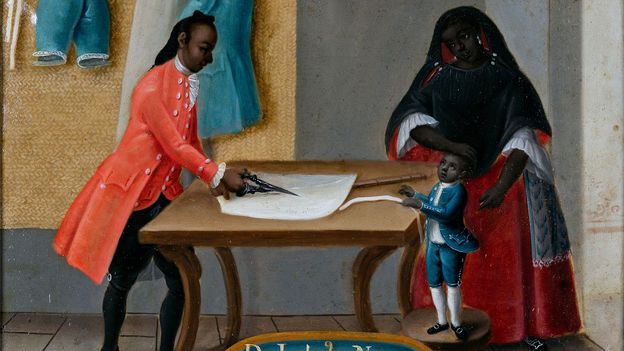
“In paintings, it is very clear that indigenous taxpayers were identified by blue-and-white striped tunics, and had a very significant hairdo,” explains Granados. By adapting other forms of dress that placed them in another racial group, people could avoid paying taxes. It was also a great benefit not to be Spanish if the Inquisition was in town, as it would mean immunity from prosecution. “They were able to choose when they wanted to be indigenous and when they didn’t. What allowed them that fluidity was their clothing,” says Granados.
Although the Casta paintings often seem to restrict their subjects to a position that was challenged in reality, certain paintings also appear to challenge the restrictions themselves. In De Lobo y Negra, Chino a bi-racial man is seen working as a tailor, a position that would theoretically have been denied him according to his race.
It is these complexities and contradictions – the veracity or not, of what they portray, and just as importantly what they don’t portray – that make the Casta paintings such a uniquely valuable and fascinating historical source. And one that invites important, if often challenging, dialogue and debate today.
“What the Casta paintings ask us to do, and help us to do, is think about how forms of racial hierarchies, how forms of racial discrimination, come into play, what supports them, but also how complex they are,” says Deans-Smith “It is this very fluidity that you can sense in the Casta paintings that really highlights the absurdity of creating racial hierarchies.”